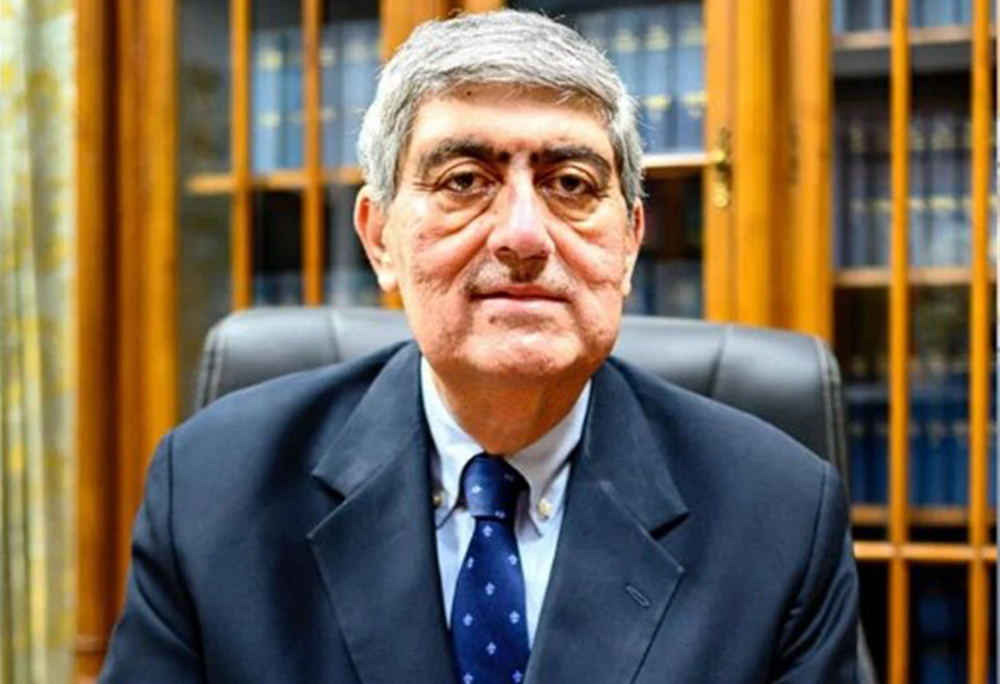
ADDRESS BY CHIEF GUEST: JUSTICE SANJAY KISHAN KAUL, HON’BLE JUDGE, SUPREME COURT OF INDIA
“The IBC has evolved vibrantly through amendments, rules, regulations, and judicial interpretations.”

“I have always been an ardent believer in the potential of alternative dispute resolution procedures. As a confidential and voluntary process, mediation in insolvency proceedings offers a distressed business relative protection from public scrutiny at a fraction of the cost of formal insolvency resolution processes.”
A very good morning to Justice A.K. Sikri (Former judge, Supreme Court of India); Justice Ashok Bhushan (Former Judge, Supreme Court of India); Mr. Scott Atkins (President, INSOL International); Mr. Amitabh Kant (Former CEO, Niti Aayog); esteemed panellists, ladies and gentlemen. At the outset, I would like to thank the Insolvency Law Academy for inviting me for their Inaugural Conference, which I am sure will be two invigorating days of intellectual rigor, technical discussions, and fruitful engagements!
India’s economy has been growing since the early 1990s, leading to an expansion of the credit market. This has resulted in an increase in non-performing loans and assets. To solve this problem, the Insolvency & Bankruptcy Code was enacted in 2016 primarily to serve two purposes first, to ensure that debtors take sound and practical decisions and second, to give financially ailing corporate entities a chance to rehabilitate and continue their business. The IBC essentially consolidated laws relating to insolvency resolution of companies, partnerships, and individuals. Hence, the implementation of the IBC in India marked the beginning of a new era that completely overhauled India’s insolvency regime. In its six years of existence, the IBC has proven to be a dynamic code, which constantly adapts to the realities of the Indian society.
For instance, the IBC shifted India’s insolvency regime from the ‘debtor-in- possession’ to ‘creditor-in-control’. Thus, the balance of power shifted from the promoters of a company to creditors resulting in healthy decision making by the promoters. It also introduced substantially reduced timelines and intermediaries like Resolution Professionals. The winding-up process of companies has become significantly more efficient since the promulgation of the IBC. Faster resolution of cases has spurred M&A deals in India, as bidders can more easily acquire stressed assets at lucrative prices and a number of companies are closer to the conclusion of their resolution processes. It would be fair to credit India’s rise in the Ease of Doing Business Index to IBC as well to some extent. India’s rank has gone from 142 in 2014 to finally 63 in 2022 – due credit for which should be given to the IBC. In my opinion, IBC has also had a big role to play in India’s new ‘start-up’ culture, by creating a conducive environment for budding entrepreneurs.
The IBC has evolved vibrantly through amendments, rules, regulations, and judicial interpretations.
The Supreme Court held in its landmark decision of Innoventive Industries Ltd. (Corporate Debtor) v. ICICI Bank & Anr (2017) that once an insolvency professional is appointed to manage the company, the erstwhile directors who are no longer in management, cannot maintain an appeal on behalf of the company. The Supreme Court continues to bring in clarity on issues of rights and powers of the stakeholders in insolvency proceedings. For example, in the recent case of Sundaresh Bhatt, Liquidator of ABG Shipyard v. Central Board of Indirect Taxes and Customs (2022), the Supreme Court opined that the IBC would prevail over the Customs Act, to the extent that once moratorium is imposed under the IBC, the Central Board of Indirect Taxes and Customs had limited jurisdiction to assess/determine the quantum of custom duty and other levies, and did not have the power to initiate recovery of the dues by means of sale/confiscation, as provided under the Customs Act.
Currently, the Government in the process of proposing changes to the IBC in order to reduce the hardships of homebuyers caught in time-consuming legal battles with real estate developers. We must appreciate that these battles are not only about the colossal amounts of money involved in these matters, but about the dreams and hard-earned savings of these homebuyers. As per the Government’s suggestion, if an application is filed against a real estate developer having multiple projects, proceedings may be initiated only against a specific project that has defaulted. This suggestion would, in a way, be a formal recognition of the concept of ‘reverse CIRP’, which allows promoters to infuse funds into stalled projects, where the focus is on the completion of the affected project rather than revival. Hence, even if the company is legally under insolvency, the economic solution would be limited to the affected project. This concept of ‘reverse CIRP’ was propounded in February 2020 by the National Company Law Appellate Tribunal in the matter of Umang Realtech.
I must admit that in these early years of the implementation of the Code, we are faced with complex questions that require authoritative and conclusive answers. But this provides not only the judiciary but also all the professionals an opportunity to contribute towards laying an infallible foundation.
The Conference highlights major aspects of insolvency regimes which are important not just for India, but also globally.
For instance, the insolvency process is highly reliant on the commercial wisdom of the Committee of Creditors, because of which they are expected to perform with the highest standards. In The Committee of Creditors of Essar Steel Limited v Satish Kumar Gupta (2019), the Supreme Court reiterated the limited judicial review available with the Adjudicating Authority and discussed the hands-off approach that should be adopted. Hence, I believe that the panel discussion on the Code of Conduct for Committee of Creditors, in this regard is not only integral but also timely.
Further, I am glad that the Insolvency Law Academy has chosen ‘Diversity and Representation in Insolvency’ as one of the topics for discussion. The diversity in our society must be reflective in all fields of life, as it brings on the table, varied views/experiences and wholesome solutions. I believe that the main issue in ensuring successful representation is ‘unconscious bias’. This has led to a viscous cycle where, on one hand, newcomers are not given the platform to showcase their talent, due to their lack of experience. But, on the other hand, these newcomers cannot find that experience if opportunities are not granted to them. Hence, I look forward to following how the discussions on bringing diversity into the procession of insolvency along with gender inclusivity are dealt with by the panellists.
While I commend the NCLT and NCLAT for doing a tremendous job in managing insolvency disputes, I would like to state here three factors that need to be considered when dealing with any insolvency dispute- first, insolvency proceedings envisage limited court interference; second, Indian courts and tribunals are overburdened leading to heavy pendency; and third, the commercial parties in such proceedings would want to save time and reputation. In this context, I appreciate Insolvency Law Academy’s efforts to bring forth the panel discussions on “Looking Into the Future: Pre Insolvency Framework” and “Mediation”. I have always been an ardent believer in the potential of alternative dispute resolution procedures. As a confidential and voluntary process; mediation in insolvency proceedings offers a distressed business relative protection from public scrutiny at a fraction of the cost of formal insolvency resolution processes. Mediation may also help reduce the burden on the NCLT and NCLAT. In fact, in 2017, Singapore had similarly recommended mediation for insolvency disputes, in an attempt to transform it into an international insolvency resolution hub. Internationally, MF Global and Lehman Brothers are two examples of important cases where mediation played a prominent role in the final resolution.
Alternate Resolution of such disputes will not only provide an avenue to the entities without facing an adversarial process but can also result in speedy and cost-effective solutions for the creditors, We have to realize that these are not professional creditors so as to say. These are people who have invested their life savings to be able to cherish the dream of owning their own house. In these cases, it becomes all the more urgent to ensure that the relief extended of the homebuyers is not only effective but is also quick and least cumbersome. The suggestion of a ‘Pre-packaged’ insolvency resolution process under the IBC for micro, medium and small enterprises is an interesting step in this direction. Internationally, ‘pre- pack’ has been regarded as a corporate rescue method that combines formal and informal insolvency proceedings – a hybrid framework that resolves the stress of a corporate debtor as a going concern with minimal State involvement.
‘Cross-border insolvency’ as a concept has been in vogue in the insolvency and bankruptcy sphere in India, especially since the Government released a draft chapter on cross-border insolvency in 2018. The proposed cross-border framework will govern all applications seeking recognition of foreign insolvency proceedings as well as applications from foreign jurisdictions seeking cooperation in Indian jurisdiction. This landmark step is expected to redefine India’s relations with the rest of the world and opens up an interesting avenue to explore during the Conference.
I am certain that the Conference will prove to be an important stepping stone in shaping India’s insolvency regime in the coming years, as there will be discussions on insolvency’s link with technology and also the future of insolvency. I believe that technology and specifically Artificial Intelligence can be very helpful in analysing, modelling, and predicting scenarios based on financial performance. The Government too plans to develop an electronic platform which can handle several processes under the IBC such as filing applications, delivering notices, storing records etc.
With these thoughts, I would like to congratulate Insolvency Law Academy for organizing this Conference, which I am certain will benefit all the participants and enrich the field of insolvency. In any society, it is the exchange of thoughts and the free flow of ideas that make it vibrant. This is all the more true when it comes to the legal fraternity. I am confident that Insolvency Law Academy will continue to contribute towards turning the insolvency regime of India into a globally recognised success story.
Thank you.




